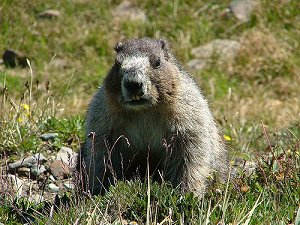
Whistler Animals. They’re out there….
Whistler animals come in an amazing variety of sizes, shapes, colors and temperament.
Life in the cities bring us into contact with dogs, cats and birds. They live with us and are our friends. We cultivate that living relationship by giving them a nice comfortable place to live and we feed them with every type of food. All they need to do in life is love us.
Life for animals in the wild is a whole other story. These animals must forage for food or starve. It’s that simple. To survive they learn very early in life that they are going to need to find their own. Their parents feed them for a little while then they are taught how to hunt. Once they learn they are on their own. They do not need us to provide food for them. They are wild and independent.
You the visitor should understand this before you leave for your trip to the mountains and valleys surrounding the Whistler corridor.
As you enjoy the outdoor life to be found along the Whistler corridor be aware of the many different species you will see if you will try.
How Whistler got its name.
The name Whistler itself comes from the Marmot. These cute little animals live in the mountains surrounding the valley. They emit a sharp little whistle as they communicate with each other. It is their unique language. They are not too afraid of man and will allow you to get quite close to them. Here is a page where you may read all about these pleasant little creatures.
One of the larger Whistler animals you may see is the Black Bears. These clever animals live all over the area. They travel quite far and may be spotted crossing the highway now and then. We have devoted a page on the bears including some pointers should you happen to encounter one and what to do to if you should meet one face to face. Also see this page on the Grizzly Bear
A great many deer live here. These animals generally stick to the forest but occasionally they like to cross the highway. Deer are browsers. That means they will eat a little bit here and a little bit there. They actually feed on over 200 different kinds of bushes and shrubs. By browsing they never do any permanent damage to their menu of greenery.
A very elusive animal is the cougar or mountain lion. These are very seldom seen. They travel long distances in search of their food. They chiefly feed on deer. These animals can be dangerous. Take a look at our page on the cougar here.
The Moose is the largest animal living along the corridor. A full grown male may weigh 1,000 pounds and stand 7 feet at the shoulder. If you have the good luck to see one you will be amazed at how tall and powerful they really are. Click here to read about them.
Natures smaller animals.
The rabbit is the most plentiful of the Whistler animals. They are prolific breeders as they must be as they are hunted by foxes, Coyote’s, Canadian Lynx and Bobcats.
The Canadian beaver makes it’s home where it has a small creek at it’s disposal. They will dam the creek to create their home.
Mink are wonderful little creatures. They live along creeks where food is plentiful for them.
A much larger animal than the mink is the otter. They are amazing fishers and the most playful of all the animals.
Squirrels, chipmunks, voles and mice make up the smaller field of animals abundant in the Whistler corridor.
Our Wonderful Feathered Friends
Whistler animals such as Eagles, both Bald and Golden varieties search the valleys and mountains for their food. You will be seeing many of these beautiful birds soaring the thermals effortlessly.
Osprey may be seen hovering over the water like gigantic hummingbirds on steroids as they search for a nice juicy fish supper.
Canada Geese, ducks and loons love the cold waters of the rivers and lakes along the Whistler corridor. These beautiful animals honor us with their presence each year as they come to visit, raise their families and feed in the beautiful quiet surroundings.
The Cougar. The name that sends shudders up the spine of any animal including we humans. Very few people realize the dangerous potential of this magnificent animal. Should you happen to see one in the wild… Without a doubt, Whistler animals will treat you to amazing displays of action. All you need to do is watch for them wherever you are in the beautiful hills, mountains, valleys and waterways of the spectacular Whistler corridor of British Columbia.
| Feel free to link to our site. Copy this code into your site. |
Return from Whistler Animals to Whistler Outdoors




